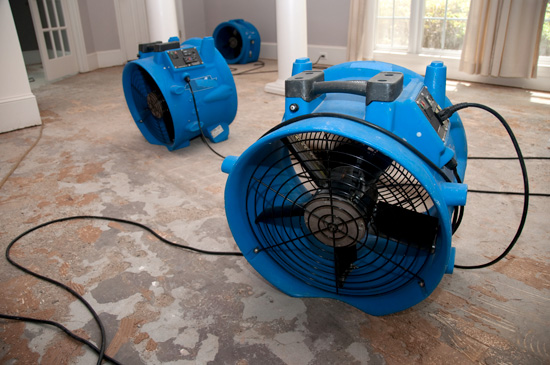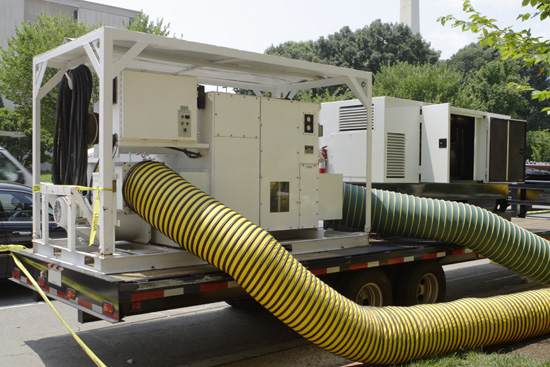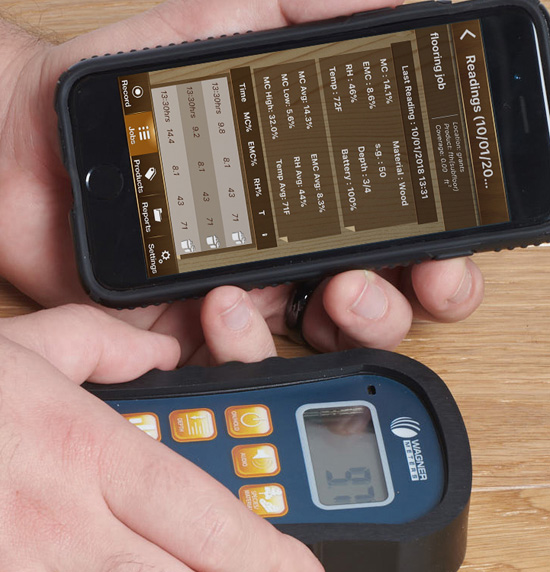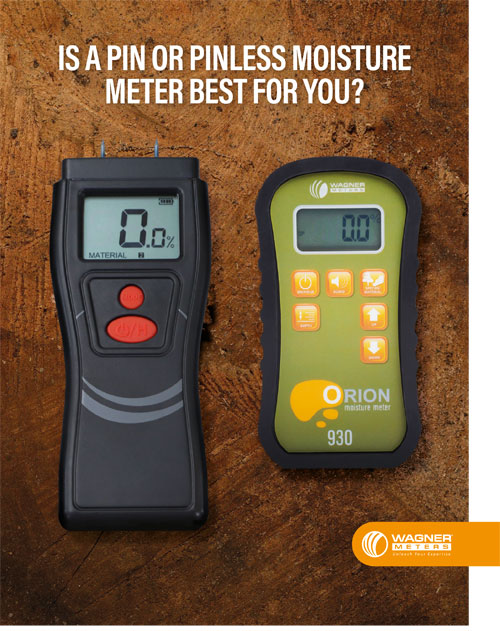Get Your Business Involved with Post-Disaster Recovery
 Flood season in many areas runs from spring through summer. Floods can also happen when the snow melts. Heavy rain and thunderstorms can cause rivers and drainage systems to overflow.
Flood season in many areas runs from spring through summer. Floods can also happen when the snow melts. Heavy rain and thunderstorms can cause rivers and drainage systems to overflow.
Hurricane season is from June through November, with hurricanes and other tropical storms hitting the Atlantic and Pacific coasts. These events can cause devastating damage from wind and water.
According to NOAA, flooding on the Mississippi River and its tributaries caused an estimated $6.2 billion in damage in 2019.
The Insurance Information Institute reports over 80 weather events in 2018 that caused close to $30 billion in water damage.
Every year, disasters like these cause severe damage, but they also present a tremendous opportunity for providers of post-disaster recovery services. By expanding your business to offer post-disaster recovery and remediation, you can take advantage of these opportunities.
The Phases of Disaster Management
FEMA defines emergency management as a cycle, so a community is always in at least one phase. The four phases are mitigation, preparedness, response, and recovery.
Mitigation involves preventing or reducing the impact of disasters. Examples include:
- Anchoring homes and buildings to their foundations to withstand high winds.
- Building levees and drainage channels, and planting vegetation to control flooding.
Preparedness includes recovery planning, training, and education for weather events that can’t be mitigated. For example:
- Developing community recovery plans.
- Practicing plans through drills and exercises.
The response phase occurs immediately following a disaster. Examples include:
- Executing disaster response plans.
- Conducting search and rescue missions.
The recovery phase can take much longer, and it must be accomplished along with normal day-to-day activities. Examples of recovery activities include:
- Caring for the sick and injured.
- Repairing and replacing damaged structures.
The mitigation and recovery phases have huge potential for contract remediation work.
Getting into Post-Disaster Recovery
 There are never enough resources in a disaster, so there’s always room for another contractor to assist in recovery efforts. Here’s how to get started.
There are never enough resources in a disaster, so there’s always room for another contractor to assist in recovery efforts. Here’s how to get started.
First, prepare yourself and your team:
- Take stock of your team’s expertise in recovery and restoration tasks.
- Are you licensed to do home improvement in your state? In some states, you must be a licensed general contractor to perform water remediation. Check with your state and county governments for their requirements.
- Develop your team’s performance scope to cover the spectrum of recovery services.
- You can get the training, assistance, and certification help you need from the Institute of Inspection Cleaning and Restoration, the non-profit certifying body for the cleaning and restoration industry.
Next, get equipped. Get high-quality equipment that can run reliably for days or even weeks at a time. Air movers and humidifiers are essential for water damage remediation. You’ll also need at least one high-quality moisture meter that can measure moisture in wood and other materials. You’ll use this to find areas with excess moisture and to determine when materials are sufficiently dry.
 The Wagner Meters Orion® 950 multi-purpose moisture meter measures wood and other materials quickly and accurately, and provides these features:
The Wagner Meters Orion® 950 multi-purpose moisture meter measures wood and other materials quickly and accurately, and provides these features:
- Fast moisture content readings take only seconds so you can quickly take as many readings as you need.
- On-site calibration allows you to quickly calibrate the meter yourself. There’s no need to return it to the factory for calibration.
- Dual depth moisture measurements at ¼” and ¾” depths for measuring everything wood from floors to framing.
- Data collection in either manual or automatic mode, with storage for up to 100 readings.
- Connection via Bluetooth® to both the Woodshop MC™ and FloorSmart™ free mobile apps for your Android or Apple smart device. You can receive and record data, record job-specific data, and more.
- Built-in ambient temperature and humidity sensors.
- Relative moisture mode takes relative moisture measurements in non-wood materials, so you can compare moisture levels and find trouble spots.
Getting Post-Disaster Recovery Contracts
Once you’re ready, there are two main ways to find work: private sector assistance through insurance company referrals, and becoming a government contractor.
Contracting Through Insurance Company Referrals
There are two ways to approach insurance companies.
First, you can market your company directly to local and national insurance agencies. Two things to remember are:
- A solid online presence is essential. Get a professionally designed website and LinkedIn profile.
- Price your services competitively, and do your absolute best work. Remember, you’re not the only game in town.The other way is to approach insurance companies is to get listed with a directory of insurance claim contractors. These providers will get you registered, set up your profile, and send you referrals from insurance companies for claims. Individuals can also find you when they’ve made an insurance claim and are looking to hire a contractor directly. Two popular providers are:
contractorconnection.com
insuranceclaimcontractor.com

Free Download – Is a Pin or Pinless Moisture Meter Best For You?
Becoming a Government Contractor
Do you want to go big time? Consider becoming a government contractor.
There are two ways to become a government contractor: The first is to use the Federal Acquisition Service (FAS) to register as a GSA (General Services Administration) contractor. The second is to use FEMA’s Public Assistance Grant Program.
Becoming a GSA Contractor
The GSA is the acquisition arm of the federal government. They acquire goods and services from the private sector for government organizations and the military.
Once you’re registered, you’ll have long-term access to regular work orders. You can start the process by visiting gsa.gov.
GSA registration can be difficult and expensive, but you have another option. You can use a Procurement Technical Assistance Center (PTAC). There are nearly 100 of these companies that can make the process easier and less expensive. A consistent favorite is uscontractorregistration.com because they offer training programs and direct assistance towards becoming a GSA contractor.
You can find more PTACs at the Association of Procurement Technical Assistance Centers (APTAC).
FEMA’s Public Assistance Grant Program
The Federal Emergency Management Agency (FEMA) assists local governments and non-profits to help when disasters occur. This program is called the Public Assistance Grant Program. Disaster remediation contractors benefit from these funds while they help their communities by performing the work provided for by these funds.
You can take advantage of these opportunities by getting registered in the Disaster Response Registry. There are two ways you can do this. First, you can do it yourself by applying through the System for Award Management (SAM) at https://www.sam.gov/SAM/pages/public/index.jsf. Unlike registering for the GSA, registering in SAM is free.
But, there’s an easier way. You can use a PTAC to get registered in SAM, and the service is free. Go to APTAC to find one.
Finally, you can be proactive and set “call when needed” agreements in place with your local city and county Emergency Management Departments. Don’t be shy — they will LOVE the offer of more resources.
Visit https://www.fema.gov/public-assistance-local-state-tribal-and-non-profit or download the Public Assistance Program and Policy Guide for complete information.
Conclusion
There you have it. A couple of ways to serve your community and boost your revenue.
So, stop reading this and go make a difference!
Larry Loffer is a senior technician at Wagner Meters, where he has over 30 years of experience in wood moisture measurement. With a degree in Computer Systems, Larry is involved in both hardware and software development of wood moisture measurement solutions.
Related Posts via Taxonomies
Last updated on May 4th, 2021



